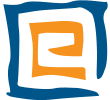[vc_row][vc_column][vc_column_text]Chances are you have accumulated a bunch of retirement accounts from former employers, investment accounts, insurance policies and maybe more. Yes, you’ll get around to organizing and making sense of it all…along with a lot of other things on your never-ending To-Do list.
At EVOadvisers, we want to help you get started. Here are simple steps to take to understand what you have, and to determine if it’s all right for you.
- Get organized. We’re sharing a checklist our clients use to get a handle on what they own. (see below)
- Simplify. Fewer accounts means less to juggle and improves your chances of focusing on your finances
- Do you have old 401(k) accounts still with former employers? You may benefit by consolidating these into an IRA or your current employer’s retirement plan. Before you do, you want to think about how much those plans charge you (more on this later) and if you would be losing any services you value.
- The same goes for IRA and regular investment accounts. Consolidating into one IRA, one Roth IRA and one “regular” account reduces the number of accounts you need to track.
- Start digging. Learn about what you own, and what it costs.
- If you own mutual funds and ETFs , find out the expense ratios. You can enter the fund name or ticker symbol into Morningstar and find this out. Make sure the expense ratios aren’t sky high. Index funds generally charge under 0.25% to manage the fund, so if you’re paying more, it’s time to start asking why.
- Did someone sell you an annuity? These are harder to decipher because in addition to the cost of the annuity itself, many annuities have riders that cost more, expense ratios for “subaccounts” (like mutual funds but not quite mutual funds), and generally charge you if you get rid of the annuity within a number of years after buying it.
- Frustrated by excessive costs? Don’t get mad, but do take action. Most of our new clients find they have been paying WAY too much for the investments they own, and we are able to help them lower their costs significantly. Of course, it’s really important to determine how to allocate your investment portfolio — between stock and bond funds — before moving forward.
- Life insurance? What kind? Term insurance is often all our clients need, and it costs a lot less than permanent life insurance (whole life, universal life, variable universal life and more). Determining if your life insurance is right for you can be complex, but start with three questions:
- How much coverage do you have?
- For each policy you have, find out the “death benefit”. This is what the policy pays your beneficiary(ies) if you die while the policy is active. It’s really important to know how much insurance you need — we can help you answer this question, as it’s often a combination of things.
- And for how long?
- If you have life insurance through work, assume you will lose it when (if) you leave your job. While many group term insurance policies can be continued, the premiums can become expensive. Ask about yours at work.
- Do you have term life insurance? How many more years remain before the term runs out and the policy ends?
- If you have whole or universal life insurance, the policy likely continues as long as you pay the premium.
- How much does it cost?
- This is where many of our new clients find they can lower their expenses and get the level of coverage their family needs.
- How much coverage do you have?
This is a solid start — but far from the full story. There’s a lot more to making sure you know your money is invested in the best ingredients. When you’re ready, call us to find out more.[/vc_column_text][vc_column_text el_class=”checklist”]
Get Organized Checklist
Recent statements for your financial accounts:
- Checking & Savings Accounts
- CDs, Money Market Funds
- Investment accounts
- 529 College Savings Plans
- Employer retirement accounts
- IRAs and Roth IRAs
- Annuities
- Any other accounts that may fall into the “investment” category
Real Estate holdings
- Mortgage Information – Interest rate, remaining balance
Liability Statements (with balance, monthly payment and term)
- Mortgage/Home Equity Line
- Student Loans
- Credit Cards
- Other Liabilities/loans and outstanding
Insurance Policies (i.e. Declaration and / or Endorsement Pages)
- Life, Disability, Long-Term Care policies
- Auto, Homeowners, Umbrella / Excess Liability coverage
[/vc_column_text][/vc_column][/vc_row]


